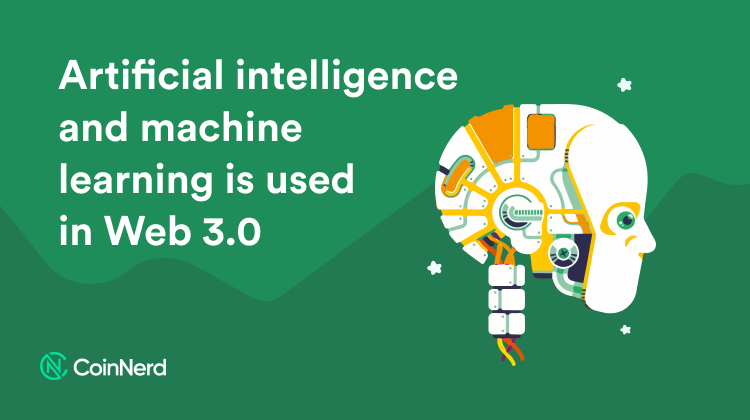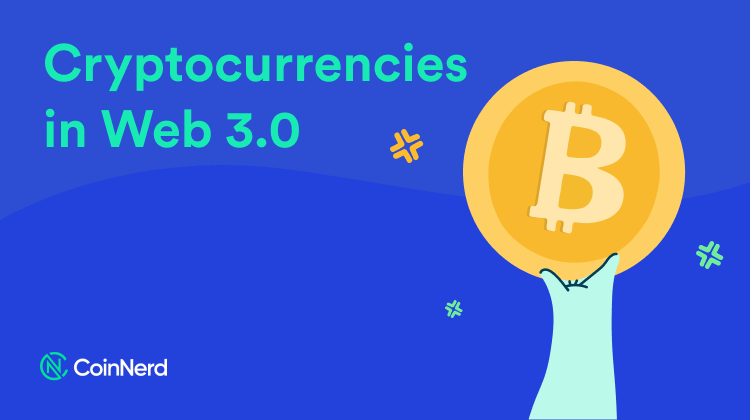Web 3.0: The future decentralized internet beginner’s guide
As more years pass, people tend to demand more and raise their expectations on everything. People want more and our current technology is no exception to this demand. They would always look for an upgraded version of whatever technology or devices they have.
Because of this growing demand for technology improvement, everything needs to have a newer and better version including our worldwide web. Currently, our worldwide web is called “Web 2.0”. But now, it is transitioning to Web 3.0.
What is Web 3.0?
Web 3.0 is defined as an upcoming version of the world wide web that will use blockchains as its data-keeping system. As we all know, data stored on blockchains are decentralized. Thus, it will be difficult to alter data unless it is approved by different nodes that share authority on that specific blockchain.
Since Web 3.0 will be decentralized, Internet users do not need to go through third-party service companies to access information on the new web. Furthermore, even governing bodies of different countries do not have control over the data stored on the blockchains of Web 3.0. This means that it will be very difficult even for the governments of countries to get data without the permission of authorized nodes.
When it comes to decentralized monetary transactions, that is currently existing through blockchains that manage cryptocurrencies and NFTs. DeFi or Decentralized Finance has become a major part of Web 3.0. Eliminating the middleman in Web 3.0 is one of the reasons why a lot of people are excited about this change in the world wide web.
How did Web 3.0 come about?

As you may have noticed, Web 3.0 means that this is the third version of the world wide web. This also implies that the web has gone through its version and second version. To understand how Web 3.0 has come about, let us start with its roots, Web 1.0.
Web 1.0
Web 1.0 is most commonly known as a Syntactic word wide web. That is because it is a read-only platform, meaning users are only allowed to view content existing on the web. Data is stored through a static file system, allowing very minimal interaction on the web.
In Web 1.0, the ones who create the content are the developers who also build the websites. In addition, the content available during this version is mostly text and graphics. Web 1.0 is said to have existed from 1991 to 2004.
Web 2.0
Since Web 1.0 is not interactive, that is what creators try to improve through Web 2.0. Web 2.0 is known to be a read-write and social web platform. As the current version we have known and loved, users are also the content creators. This is possible through the many websites that allow their users to input data from their side. A great example of these sites is the social media platforms.
In addition, web users can also create their websites and platforms through available open-source codes. Those who do not have the time to study programming languages are not at a disadvantage. That is because they too can create websites through third-party site-building websites like Wix, WordPress, and Squarespace. As a result, more and more websites and content are created on Web 2.0.
Furthermore, Web 2.0 opened the doors for virtual transactions on the web. Websites and applications are used for business dealings and transact payments. That is why popular online shopping platforms like Amazon and eBay can sell and deliver products and receive payments from all over the world.
Another great opportunity that opened because of Web 2.0 is venture capitalism. Investors are not only looking to invest in physical products and services but also digital ones. This has opened many business opportunities that don’t necessarily need a physical store hence, lesser expenses.
For example, a company proposed to create an application that aids people to find the best restaurants in a certain area. Investors will fund this project so the company can create, launch, and market this application. Next, the company will look for restaurants to have them join the app so they can have a profile and post their ads. Then, they will encourage users to download the app and give them a better user experience if they choose to pay for a VIP membership. Because of this, the company can monetize its app and bring in high returns to its investors.
However, there is a downside to the monetization of Web 2.0. Since companies will find ways to earn more, they tend to exploit their user base. These companies have a lot of control over confidential data about their consumers. As a result, they became tempted to sell these data to other companies thus violating the privacy of the users.
Furthermore, hacking and information manipulation had become prevalent on Web 2.0. These hacking activities are not just small-scaled but also extensive. Since most websites use a centralized system to store data, they are vulnerable to attacks and data theft. Therefore, this is what developers aim to fix through Web 3.0.
Web 3.0
If Web 1.0 is known as a read-only web and Web 2.0 is a read-write web, Web 3.0 is a read-write-execute web. With the help of artificial intelligence and machine learning, computers can analyze data similar to how humans do. This helps the web in generating valuable content following the needs of the users.
Furthermore, since Web 3.0 is decentralized, it will not use a single database. As a result, information will be stored at multiple locations, making it nearly impossible for hackers to steal them. Aside from information, websites and applications deployed on the blockchains will be difficult to penetrate by outside parties. Moreover, there is a reward reserve for network developers if they can deliver top-quality decentralized network services. Usually, the reward is given in the form of cryptocurrencies and governance tokens.
Difference between Web 3.0 and Web 2.0
As can be gathered from earlier information, Web 3.0 is an improved version of Web 2.0. Apart from decentralizing the data, Web 3.0 has a lot more differences from Web 2.0. This section will dive deeper into the differences between the two world wide web versions.
One of the differences between Web 3.0 and Web 2.0 is their target reach. Web 2.0 focuses on community building which is commonly seen on social media. However, Web 3.0 targets the users as an individual. Because of this, Web 3.0 aims to empower individual users through a trustworthy blockchain, high security, and user-controlled privacy. This is far different from the focus of Web 2.0 which is tagging and a high-quality end-user experience.
In line with that, Web 3.0 and Web 2.0 differ in who decides when an action is taken on the web. In the older version, companies that own the websites are the ones who decide. Since there is a central authoritative entity, users are expected to trust their decisions. However, that is not the case with Web 3.0 since the action taken will be decided by the users. Usually, users try to obtain governance tokens to get a role in the decision-making process. With this, Web 3.0 promotes active participation among its users which is in contrast with Web 2.0 which encourages passive content consumption.
Furthermore, the two versions of the world wide web differ in the applications that are created in it. While Web 2.0 has the typical web application. This means that it uses programming languages to create and encrypt data. Web 3.0, on the other hand, has Smart Applications. These types of applications not only use programming mediums but also Machine Learning and Artificial Intelligence. It also uses decentralized protocol as its driving technology. As a result, data access is easier and more precise.
When it comes to advertisement, Web 3.0 and Web 2.0 have a slight difference. Web 2.0 hosts different kinds of advertisements. The most advanced among them is the interactive ads which are commonly found in gaming advertisements. Although these interactive ads can also be found in Web 3.0, their advertisement will focus on the behavioral aspect. This is made possible because of the Artificial Intelligence and Machine Learning components of Web 3.0. Furthermore, 3D graphics will be more prevalent in the newest version of the world wide web.
Main Components of the Web 3.0

Although we are currently using Web 2.0, we are also in the middle of transitioning to Web 3.0. However, as we utilize the world wide web, we may see and think that nothing has changed. Yes, it may still be the same but new components are now slowly getting integrated into the new web. Here are some of the components of Web 3.0 that are being infused into our world wide web.
The Blockchain
As mentioned earlier, the blockchain is one of the most significant components of Web 3.0. It is an online ledger where its transaction records are distributed among multiple nodes. This component is the reason why Web 3.0 is open, decentralized, and difficult to hack. Thus, it is considered to be more secure compared to its earlier versions.
With the help of the blockchain, web users become owners of their data, giving them full control over it and not having to entrust them to an organization on the web. Web 3.0 users can also trade data without the risk of getting hacked and losing privacy and ownership. Furthermore, intermediaries are unable to keep track of your exploration over the Internet, making Web 3.0 more secure and confidential to the individual user.
As we may all know, blockchains are the ledgers for cryptocurrency transactions. Since blockchains will be used in the newest version of the world wide web, developers and even users will have the opportunities to monetize. They can also get rewards by contributing to online upgrades and expansions. Thus, users are becoming more engaged in Web 3.0.
The Metaverse
Web 3.0 is set to be the world wide web that will host the Metaverse. The Metaverse is a virtual world where people can do things that they do in the real world. Through virtual reality technologies, people can play, shop, communicate, study, and work in the Metaverse.
Web 2.0 has already enabled us to do a lot of things that we only previously did during face-to-face interactions. But Web 3.0 will make it feel more realistic than before. It aims to develop avatars that people can purchase and customize. Furthermore, there are also a lot of digital assets that users can buy using their crypto coins, which also powers the blockchain networks.
As for the visual components of Web 3.0, the metaverse technology will use a lot more 3D designs. Moreover, it will also be using some high-definition visual technology such as virtual reality. It will also make use of augmented virtual reality and holographic projections. Through these technologies, the metaverse will make Web 3.0 as realistic as a digital world can be.
Artificial Intelligence
Artificial Intelligence has been around for quite some time now and has developed progressively in the last few years. It has achieved the state where it can make valuable human-like predictions and make life-saving decisions. Even if Web 3.0 is still in its early stages, there is already artificial intelligence existing in Web 2.0. However, Web 2.0 is still controlled by giant tech companies which prevents AI from doing its job.
The main task of Artificial Intelligence or AI is to eliminate human error and sift out mistakes throughout the Internet. It also corrects rigged systems within websites making them more trustworthy. As a result, most manipulative acts are decreasing with the help of AI. Once this is incorporated into Web 3.0, accurate data will be delivered and users will no longer doubt them.
Cryptocurrencies in Web 3.0

From what was read so far, it is easy to perceive that the most recent and upcoming version of the world wide web will be interlinked with cryptocurrencies. That is mainly because one of the major components of Web 3.0 is blockchains, the same medium that hosts and records Bitcoins and Altcoins. Aside from crypto coins, Web 3.0 will also make use of nonfungible tokens. Since crypto tokens are used as a driving force of blockchains, it is safe to say that Web 3.0 protocols will rely heavily on these digital currencies.
Similar to blockchains, Web 3.0 will be decentralized. Thus, it will need multiple nodes and managers. To compensate those who will contribute to the development of Web 3.0 and its projects, there should be crypto coins available. These digital tokens will also provide governance privileges. These privileges will enable its holders to have voting rights on what action to implement that will determine the course of a certain project. This is why DAOs (Decentralized Autonomous Organizations) will be prevalent once Web 3.0 is fully launched.
Advantages and Disadvantages of Web 3.0
Web 3.0 may be the better version of Web 2.0 however that does not imply that the newest web is flawless. There are some disadvantages that future users of the new world wide web should keep in mind. But, it is still important that we know the advantages so we can assess and compare them with the disadvantages.
Advantages
Web 3.0 is created to improve the existing Internet. Thus, its advantages had been advertised and constantly mentioned to bring awareness to everyone. One of the advantages of Web 3.0 is the expansion of data connection. Since Web 3.0 is a semantic website, online information can be easily networked and distributed.
Another advantage is that it is more proficient in its visuals. Not only does it use 3D graphics but it is also interactive. Therefore, Web 3.0 will bring forth more compelling connections between users and computers and among individual users. As a result, sharing of content will be more efficient and better human collaboration is formed.
Furthermore, browsing the internet is more productive in Web 3.0. That is since it will use Artificial Intelligence and Machine Learning to provide more accurate search results. Thus, it will make browsing more personalized, also making work on the Internet effortless.
Disadvantages
Web 3.0 brings about some disadvantages that people should also think about and prepare for. One of the biggest disadvantages is that less advanced electronic devices won’t be able to access Web 3.0. To be able to overcome this, people will be forced to buy Web 3.0-compatible gadgets which will cost them a lot.
In addition, Web 1.0 will likely disappear once Web 3.0 is fully released. That is because the latter version will provide a better user experience that will make Web 1.0 very plain in comparison. Web 2.0, despite being a better version, is not far off from Web 1.0 which is why some sites and applications still use the read-only web version. Because of Web 3.0, sites and applications that still use the components of Web 1.0 will have to upgrade.
Even though technology has been advancing crescively, some people cannot keep up with it. A lot of non-tech-savvy individuals are already having a hard time navigating through Web 2.0. Thus, it is no surprise that they will completely struggle once Web 3.0 arrives. These people will not be able to take advantage and enjoy the benefits of the new web unless they put in the effort to learn how it works.
Speaking of not up to times, our present-day technology is said to be not fully prepared for the upcoming Web 3.0. Electronic device manufacturers are still in the earliest stage of devising gadgets. With Web 3.0 still under construction, manufacturers won’t be able to accurately test out the gadgets to see if they can access the new web without any issue. Therefore, people should expect that devices will go under trial and error before we can smoothly access and utilize the new world wide web.
Although data manipulation will be prevented because of blockchains, that does not necessarily mean that people won’t see the contents of our information. Because of the decentralized feature of Web 3.0, personal and public information will be viewable to everyone. But since developers had foreseen this problem, they are working on creating privacy protocols to solve this.
Example of Web 3.0

As stated earlier, a handful of websites and applications are already using the components of Web 3.0. That is because technologies like Artificial Intelligence and Virtual Reality are already present and accessible to developers. One of the most popular examples of Web 3.0 applications that people are now using is Siri.
Siri is an application of Apple that acts as a phone virtual assistant. It assists people in getting around and using their iPhones without having to do lots of clicks. It uses Artificial Intelligence and Machine Learning to provide accurate search results and complete tasks according to the personalized need of the user. Because Siri made phone activities a lot more convenient, other companies like Google, also made their version of Siri.
Conclusion
Whether we like it or not, Web 3.0 is bound to arrive anytime soon. Thus, as netizens, we should understand how we can navigate ourselves on this new web. Furthermore, we should also look into ways on how we can better take advantage of the upgrades and privileges Web 3.0 will be providing. Also, we must keep in mind the disadvantages so we can overcome them and nothing will prevent us from using Web 3.0. For more information on Web 3.0, continue reading our other blog posts and news articles.
* We hope this information will help you in your investment process, but this is not investment advice. Every investment carries risk, especially in this industry, so DYOR before making a decision.




